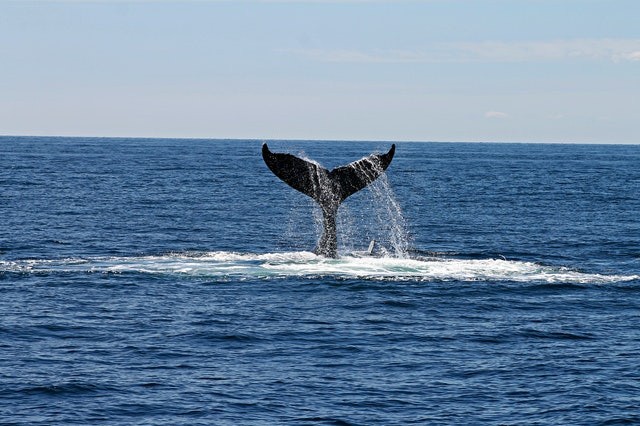The feeding process of whales usually involves taking in a large amount of water, how they do this without drowning could be an important question asked out of curiosity.

Feeding Mechanism of Whale
A lung feeding whale has a fleshy bulb in its mouth called the 'oral plug', this bulb moves backward to seal off the upper airways during feeding, while their larynx closes to block the lower airways preventing water from entering the lungs while they feed, according to Phys.org.
"It's kind of like when a human's uvula moves backward to block our nasal passages, and our windpipe closes up while swallowing food," according to Dr. Kelsey Gil, the study's lead author and also a postdoctoral researcher in the department of zoology.
This lung-feeding predator engulfs their prey along with gallons of water that are sometimes larger than their body, the group of whales according to Dr. Gil involved in this process includes the humpback and the blue whale, Earth's largest animal.
The fin whale which is also a lung feeding whale is specifically studied, this is because researchers discovered that the oral plug needs to move to the back of the animal's head in order to allow food to pass to the esophagus thereby blocking the nasal passages anytime the whale try to swallow.
At the same time, cartilages close the entrance of the larynx, and the laryngeal sac moves upwards, blocking off the airways below.
How Lunge-feeding Evolved
Mr. Gil said researchers haven't noticed similar protective mechanism both in other animals and in the literature. Most of researchers' knowledge concerning whales and dolphins are gotten from toothed whales.
But toothed whales possess a very different respiratory tracts and so many makes similar supposition about lunge-feeding whales. The major component and evolution of lunge-feeding whales depend solely on the oral plug.
According to Dr. Robert Shadwick, a senior author and also a professor in the UBC department of zoology, "Bulk filter-feeding on krill swarms is highly efficient and the only way to provide the massive amount of energy needed to support such large body size.
This would not be possible without the special anatomical features we have described."

Further Research on Whale's Feeding Mechanism
Due to less advancement of technology, working on the anatomy of whales involves dissection of dead whales which is quite difficult and comes with lots of challenges.
Dr. Gil and his colleagues had performed their dissection on dead whales in Iceland in 2018 and had expressed how thrilling it would have been to have a more advanced technology that can give a more detailed picture of whales feeding while they are alive.
Since there are a lot of human impacts that affect food chains, and discovering how whales eat and the amount of food they consume, it's important to gain as much knowledge as possible so that the animals and their eco systems can be protected.
For more news, updates about whales and similar topics don't forget to follow Nature World News!
© 2025 NatureWorldNews.com All rights reserved. Do not reproduce without permission.





